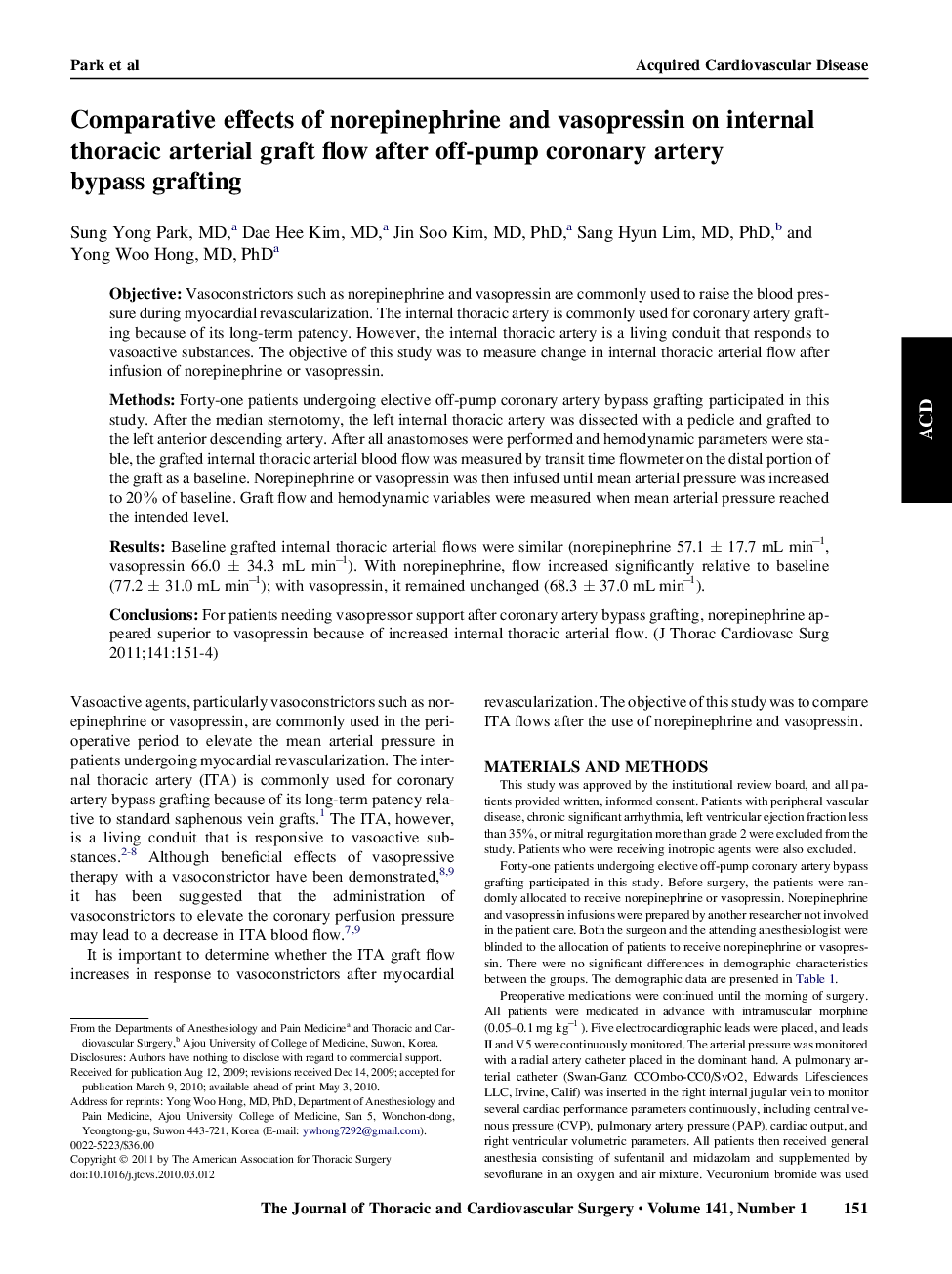| Article ID | Journal | Published Year | Pages | File Type |
|---|---|---|---|---|
| 2983282 | The Journal of Thoracic and Cardiovascular Surgery | 2011 | 4 Pages |
ObjectiveVasoconstrictors such as norepinephrine and vasopressin are commonly used to raise the blood pressure during myocardial revascularization. The internal thoracic artery is commonly used for coronary artery grafting because of its long-term patency. However, the internal thoracic artery is a living conduit that responds to vasoactive substances. The objective of this study was to measure change in internal thoracic arterial flow after infusion of norepinephrine or vasopressin.MethodsForty-one patients undergoing elective off-pump coronary artery bypass grafting participated in this study. After the median sternotomy, the left internal thoracic artery was dissected with a pedicle and grafted to the left anterior descending artery. After all anastomoses were performed and hemodynamic parameters were stable, the grafted internal thoracic arterial blood flow was measured by transit time flowmeter on the distal portion of the graft as a baseline. Norepinephrine or vasopressin was then infused until mean arterial pressure was increased to 20% of baseline. Graft flow and hemodynamic variables were measured when mean arterial pressure reached the intended level.ResultsBaseline grafted internal thoracic arterial flows were similar (norepinephrine 57.1 ± 17.7 mL min−1, vasopressin 66.0 ± 34.3 mL min−1). With norepinephrine, flow increased significantly relative to baseline (77.2 ± 31.0 mL min−1); with vasopressin, it remained unchanged (68.3 ± 37.0 mL min−1).ConclusionsFor patients needing vasopressor support after coronary artery bypass grafting, norepinephrine appeared superior to vasopressin because of increased internal thoracic arterial flow.
